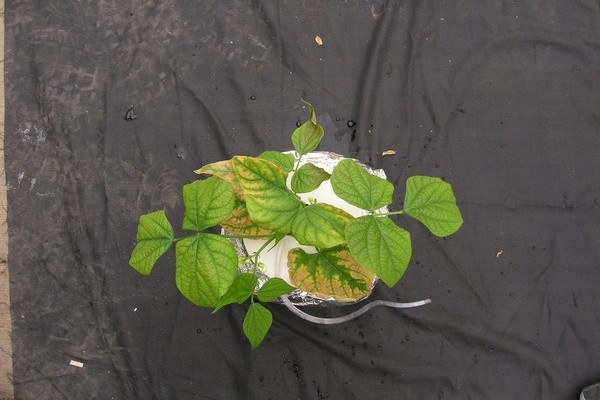
Blotchy chlorosis of older leaves
From the Hort402 manual
Potassium-deficient plants are easily distinguished by their tendency to wilt on dry, sunny days. The overall appearance of the plant is wilted or drooping. Deficient plants will have a stocky appearance with short internodes. Younger leaves' growth is inhibited, and they have small leaf blades. Leaves may also be dark to bluish-green, have a bronze metallic shine, or have a wavy appearance. In some species older leaves show blotchy chlorosis. In monocots such as maize, leaves may have inverted V-shaped chlorosis.
Symptoms
- blotchy chlorosis of older leaves
- water stress
Important processes
- Potassium stress is rare in nature but may occur on agricultural grounds on which continued export of potassium in the produce has led to potassium mining. Typical examples are small scale banana plantations and other fruit plantations in the developing countries.
- Plants don't respond to K stress by altering their shoot/root ratio like they do for N and P deficiency. Because of the abundance of K in nature selection for a response may have lacked.
- Potassium is important for maintaining turgor. Lack for turgor in the cells surrounding the stomata may result in extra water stress.
NOTE about Photo:
This bean plant received 0 K, so stress levels are higher than normal seen in the field.

